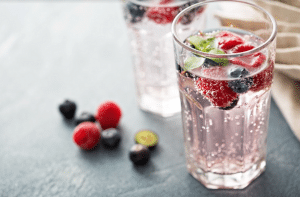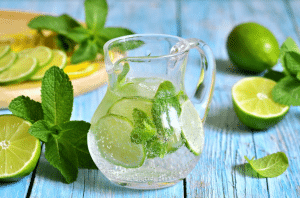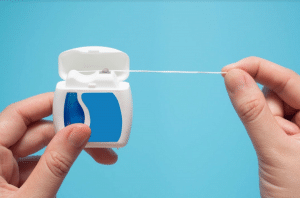
The FDA also urges parents not to use—rather to dispose of—homeopathic teething tablets, after lab testing found “inconsistent amounts of belladonna, a toxic substance, in certain homeopathic teething tablets, sometimes far exceeding the amount claimed on the label.”
If you, your family or friends need dental care, we would be honored to provide you with state-of-the-art dental care in our modern dental practice. Refer someone you love to someone you trust!
Presented as a service to the community by Doctors Hoover and Yanda,
39 Milford Drive, Hudson, Ohio 44236. 330-650-0360. www.drshooverandyanda.com

 While we certainly have many patients who have traditional dental insurance plans, there is a new method of paying for dental services that is becoming a very popular. A Concierge Plan is an in-office plan that helps patients afford their needed dentistry. It is not traditional dental insurance, but rather a “membership plan,” very similar to plans like Costco, Amazon Prime, Sam’s Club, etc. For one very affordable annual fee, a patient in our office receives a comprehensive exam for new patients, two professional cleanings and two periodic exams per year, an emergency exam if needed, a full-mouth series of x-rays every five years, one set of bitewing x-rays per year, two fluoride treatments per year if needed and 15% off of any other dental treatment they have done within that year. There is no limit on how much dentistry can be received. We have other plans too for families and for periodontal patients who need more frequent cleanings.
While we certainly have many patients who have traditional dental insurance plans, there is a new method of paying for dental services that is becoming a very popular. A Concierge Plan is an in-office plan that helps patients afford their needed dentistry. It is not traditional dental insurance, but rather a “membership plan,” very similar to plans like Costco, Amazon Prime, Sam’s Club, etc. For one very affordable annual fee, a patient in our office receives a comprehensive exam for new patients, two professional cleanings and two periodic exams per year, an emergency exam if needed, a full-mouth series of x-rays every five years, one set of bitewing x-rays per year, two fluoride treatments per year if needed and 15% off of any other dental treatment they have done within that year. There is no limit on how much dentistry can be received. We have other plans too for families and for periodontal patients who need more frequent cleanings.  Teeth grinding, also called bruxism, can be caused not just by stress and anxiety but by sleep disorders, an abnormal bite or teeth that are missing or crooked. People who drink alcohol and smokers are approximately twice as likely to grind their teeth. The symptoms of teeth grinding include dull headaches, jaw soreness, teeth that are painful or loose, and fractured teeth.
Teeth grinding, also called bruxism, can be caused not just by stress and anxiety but by sleep disorders, an abnormal bite or teeth that are missing or crooked. People who drink alcohol and smokers are approximately twice as likely to grind their teeth. The symptoms of teeth grinding include dull headaches, jaw soreness, teeth that are painful or loose, and fractured teeth. Regular dental visits are important because they can help spot dental health problems early on when treatment is likely to be simpler and more affordable. They also help prevent many problems from developing in the first place. Visiting your dentist regularly is also important because some diseases or medical conditions have symptoms that can appear in the mouth.
Regular dental visits are important because they can help spot dental health problems early on when treatment is likely to be simpler and more affordable. They also help prevent many problems from developing in the first place. Visiting your dentist regularly is also important because some diseases or medical conditions have symptoms that can appear in the mouth.  Sparkling water is far better for your teeth than sugary drinks. In addition, be sure to drink plenty of regular, fluoridated water, too—it’s the best beverage for your teeth. Water with fluoride naturally helps fight cavities, washes away the leftover food cavity-causing bacteria feast on and keeps your mouth from becoming dry (which can put you at a higher risk for cavities).
Sparkling water is far better for your teeth than sugary drinks. In addition, be sure to drink plenty of regular, fluoridated water, too—it’s the best beverage for your teeth. Water with fluoride naturally helps fight cavities, washes away the leftover food cavity-causing bacteria feast on and keeps your mouth from becoming dry (which can put you at a higher risk for cavities). 
 Break off about 18 inches of floss and wind most of it around one of your middle fingers. Wind the remaining floss around the same finger of the opposite hand. This finger will take up the floss as it becomes dirty.
Break off about 18 inches of floss and wind most of it around one of your middle fingers. Wind the remaining floss around the same finger of the opposite hand. This finger will take up the floss as it becomes dirty. Plaque that is not removed by brushing and cleaning between your teeth can eventually harden into a rough substance called tartar (or calculus). Tartar collects along your gum line and can lead to gum disease. Once tartar forms, only your dentist or dental hygienist can remove it.
Plaque that is not removed by brushing and cleaning between your teeth can eventually harden into a rough substance called tartar (or calculus). Tartar collects along your gum line and can lead to gum disease. Once tartar forms, only your dentist or dental hygienist can remove it. Cleaning between your teeth may help prevent cavities and gum disease. Cleaning between your teeth helps remove a sticky film called plaque. Plaque contains bacteria that feed on leftover food or sugar in your mouth. When that happens, it releases an acid that can eat away at the outer shell of your teeth and cause cavities.
Cleaning between your teeth may help prevent cavities and gum disease. Cleaning between your teeth helps remove a sticky film called plaque. Plaque contains bacteria that feed on leftover food or sugar in your mouth. When that happens, it releases an acid that can eat away at the outer shell of your teeth and cause cavities. When You’re Working Out
When You’re Working Out